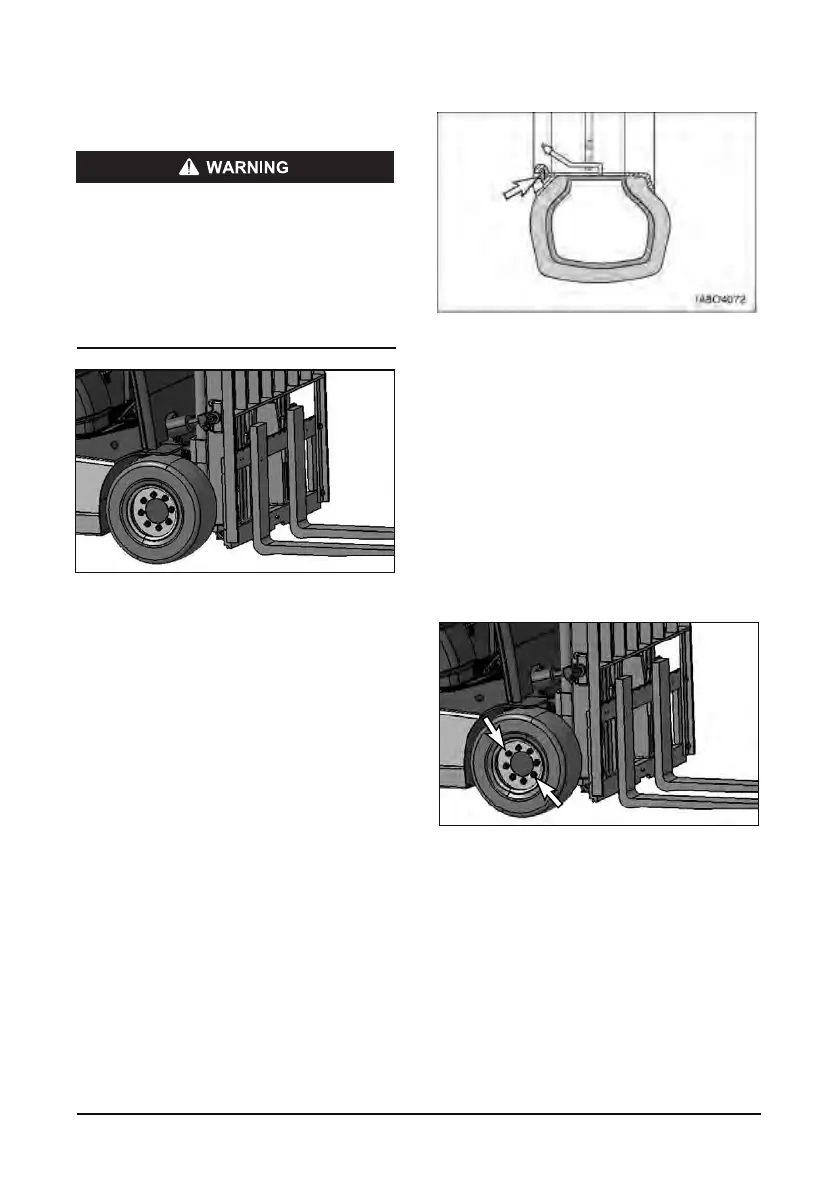Maintenance Section
118
Tires and Wheels - Inspect, Check
Servicing and changing tires and rims can be
dangerous and should be done only by trained
personnel using proper tools and procedures. If
correct procedures are not followed while
servicing tires and rims, the assemblies could
burst with explosive force and cause serious
physical injury or death. Follow carefully the
specific information provided by your tire
serving man or dealer.
Inspect tires for wear, cuts, gouges and foreign
objects. Look for bent rims and correct seating of
locking ring.
If equipped with pneumatic tires, check tires for
proper inflation. See topic, “Tire Inflation Pressure.”
To inflate tires always use a clip-on chuck with
minimum 60 cm (24 inches) length of hose to an
inline valve and gauge.
Always stand behind the tread of the tire, NOT in
front of the rim.
Lift truck capacity is dependent on tire type. Your lift
truck dealer should be consulted for possible down
ratings when pneumatic tires are used to replace
solid (cushion) tires.
Do NOT inflate a tire that has been run while flat or
underinflated, without first checking to make sure
the locking ring on the wheel is not damaged and is
in position.
When tires are changed be sure to clean all rim
parts, and if necessary, repaint to stop detrimental
effects of corrosion.
Sand blasting is recommended for removal of rust.
Check all components carefully and replace any
cracked, badly worn, damaged and severely rusted
or corroded parts with new parts of the same size
and type. If there is any doubt, replace with new
parts. Do not, under any circumstances, attempt to
rework, weld, heat or braze any rim components.
1. Install drive wheel. Install two nuts opposite
each other (180°).
2. Install the remaining nuts. Tighten all nuts in a
crisscross sequence opposite each other (180°)
to 250 N·m (187 lb·ft).
3. Reverse the lifting procedure for the front of the
lift truck and lower it to the ground.

